Over the course of the past few months, I’ve been conducting the 2019 Utility Fee Survey. This is an update to the original Utility Fee Survey in 2012 and subsequent fee surveys in 2015 and 2017. The survey was designed to research what fees utilities charge, how much they charge for each fee, and to see what trends, if any, are occurring with fees.
This is the second of three consecutive blog posts reporting the results of the 2019 Utility Fee Survey. 135 utilities, representing 22 states, ranging in size from 89 to 539,000 active accounts participated in the survey.
The Utility Fee Survey has become a biennial survey, alternating years with the Utility Staffing Survey.
The last issue summarized the demographics of the survey respondents as well as water and sewer tap and impact fees. Today’s issue deals with delinquent fees and policies. The next issue will be the third and final survey results issue and will recap all remaining fees.
Late fees
Of the 135 participating utilities, 133 charge a late fee. As shown by this graph, charging a late fee as a percentage of the bill is the most popular method:
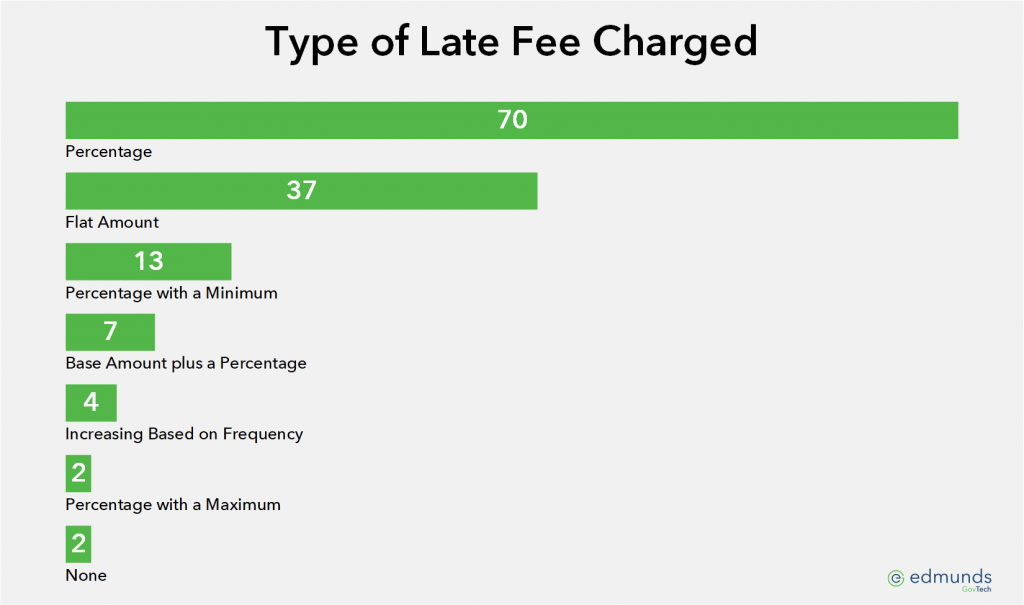
Compared to the 2017 Utility Fee Survey, utilities charging a percentage is down (52.6% vs. 59.3%), while those charging a flat amount is up slightly (27.8% vs. 26.1%). The largest increase is in utilities charging something other than a percentage or flat amount (up from 13.0% to 19.5%).
Utilities that assess the late fee as a percentage charge from 1% to 25%, with 10% again being by far the most popular, as this graph depicts:
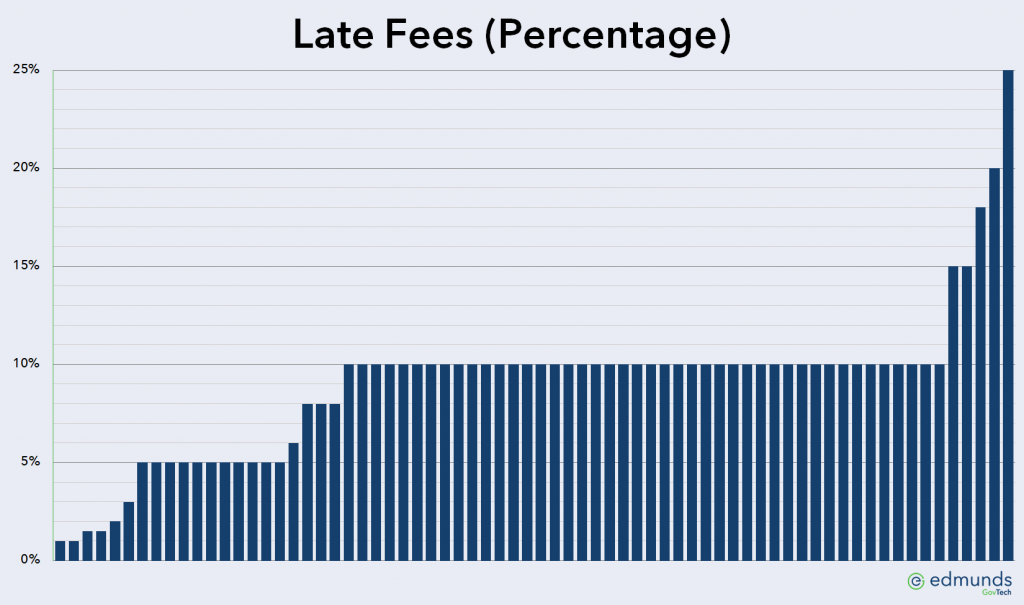
Late fees range from $5.00 to $50.00 for utilities that charge a flat amount. This graph illustrates the late fee flat amounts:
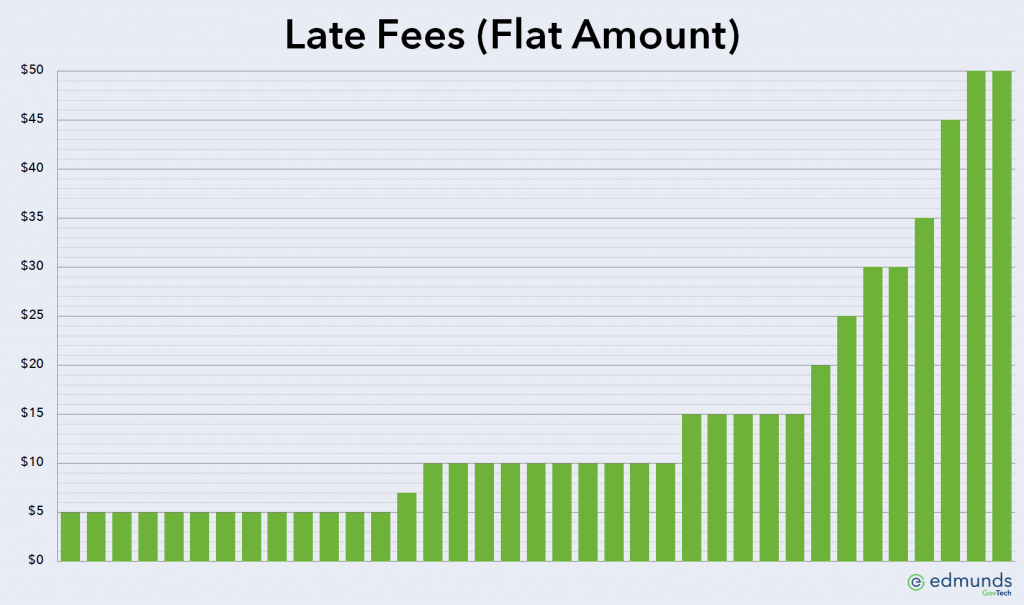
Thirteen of the utilities (up from eight in 2017, a 62.5% increase) charge a hybrid late fee – a combination of a percentage with a minimum amount. Here is a graph showing what they charge:
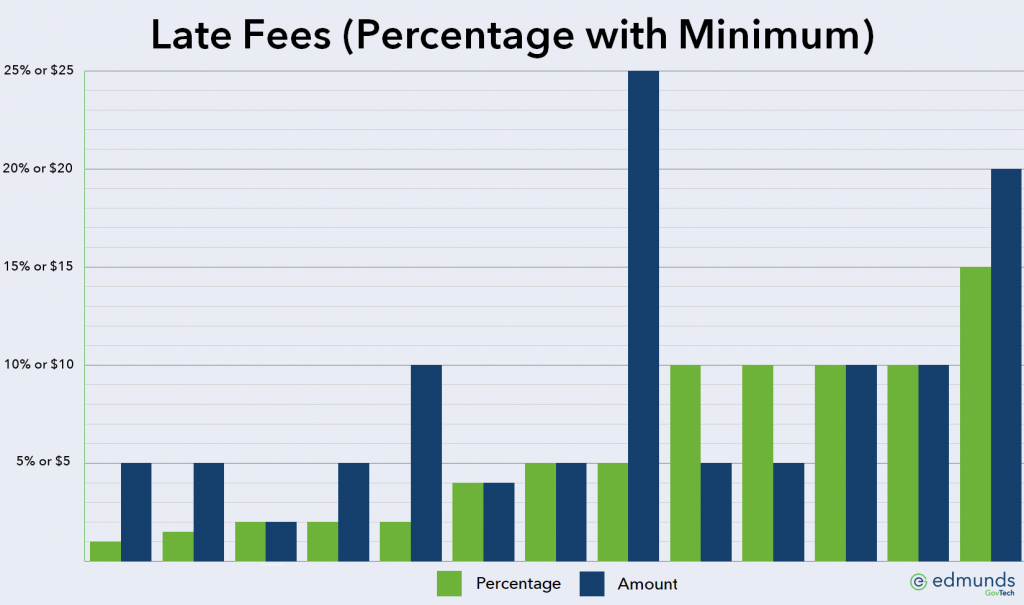
Seven utilities charge a base amount plus a percentage as shown below:
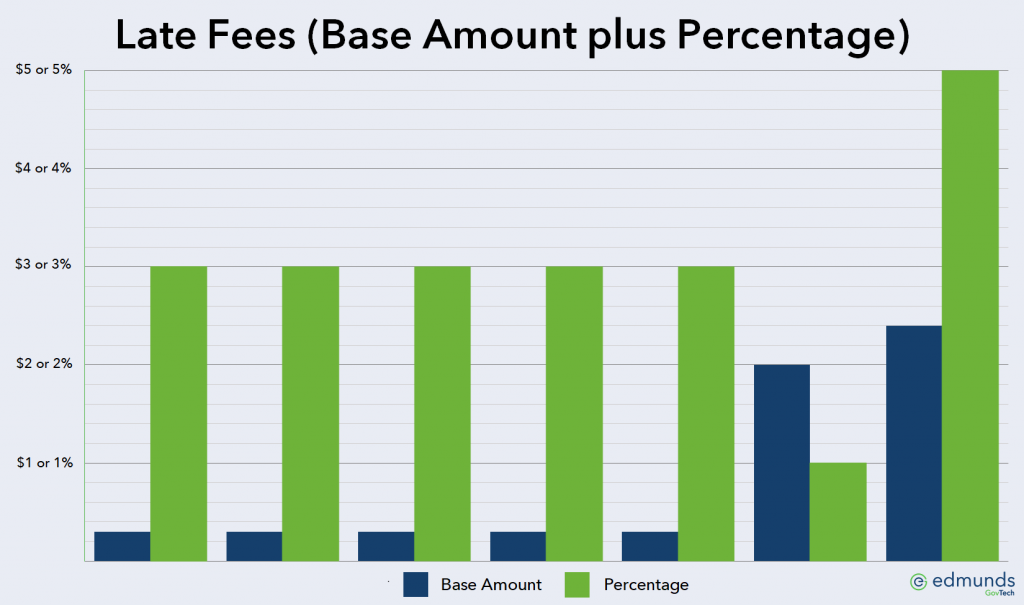
While not technically a fee, this year’s survey again asked how, other than the utility bill, each utility notifies customers that a late fee or penalty has been applied. Here are the responses to that question (the total of all responses is greater than the number of participating utilities because some utilities use multiple methods of contact):
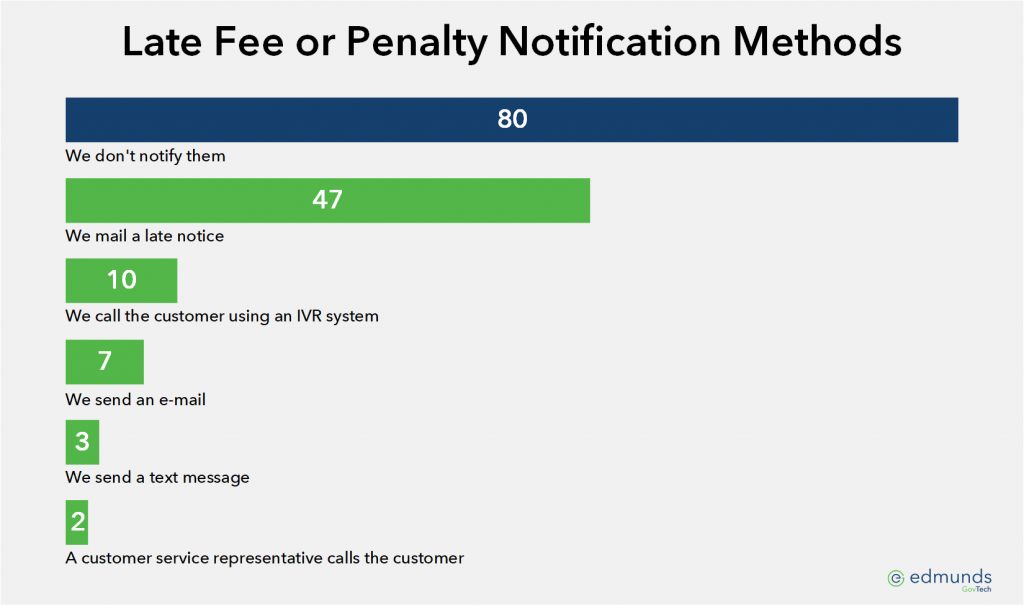
Cut-off fees
Seventeen of the 135 utilities do not cut off for non-payment. All of the 118 that do cut off for non-payment charge a cut-off or reconnect fee as a flat amount. Three of the responding utilities charge an escalating cut-off fee whereby the more times a customer is on the cut-off list, the higher the fee becomes. In those cases, the amount shown in the graph is for first offenders. Additionally, three of the utilities charge a separate disconnect fee and reconnect fee. In those cases, the graph represents the combined total of both fees. Finally, three additional utilities charge a cut-off fee per service. In those cases, the graph assumes all services are being disconnected.
Cut-off or reconnect fees charged by the 118 utilities range from $15.00 to $550.00 as shown below:
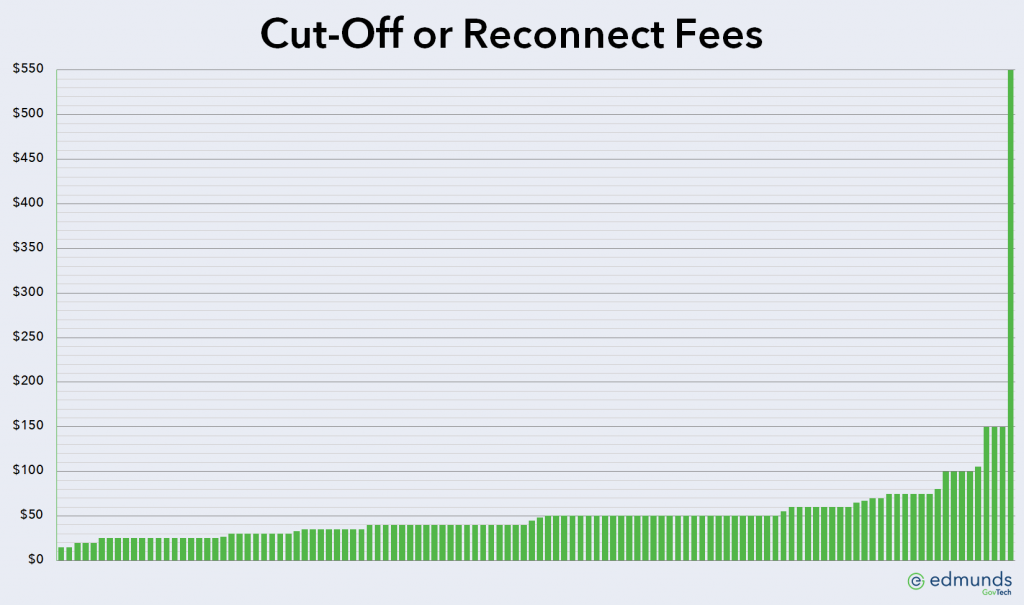
Of the 118 utilities that cut off for non-payment, 76 of them (representing 64.4%) assess the cut-off fee as soon as the cut-off list leaves the office. Surprisingly, the percentage of utilities charging the cut-off fee immediately is down 9.5% from the 2017 Utility Fee Survey.
Cut-off fee terminology
As utilities adopt the best practice of charging the cut-off fee as soon as the cut-off list leaves the office, many are finding that terms such as “cut-off fee”, “disconnect fee” or “reconnect fee” are becoming outdated. For that reason, the survey asked what each utility calls its cut-off fee. The results are displayed in the following chart:
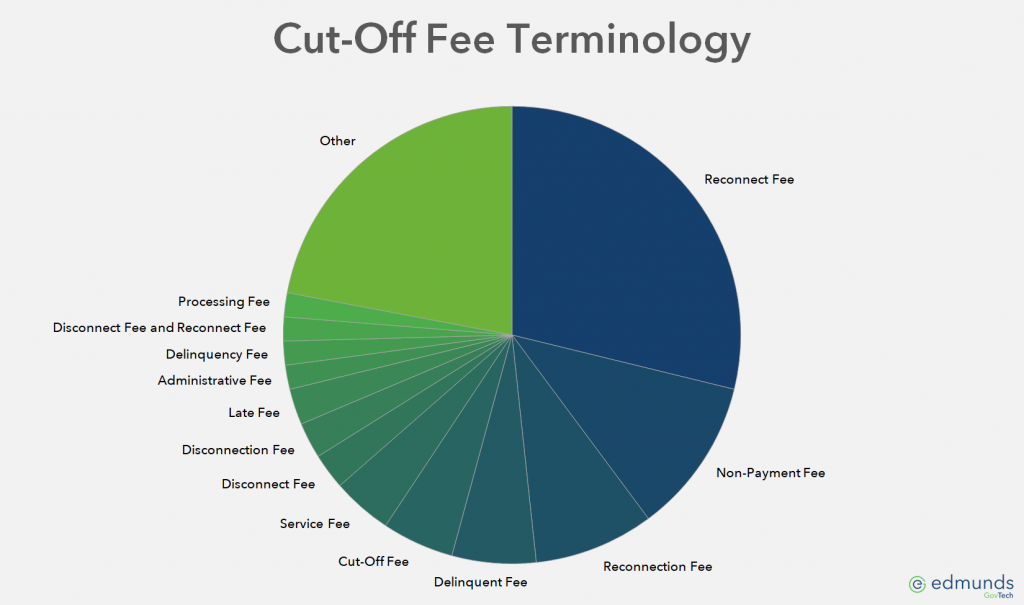
Again this year, Reconnect Fee is still the most popular term, but Non-Payment Fee has replaced Cut-Off Fee as the second most popular term, as many utilities adopt terms that do not refer to cut-off or reconnection. Calling your cut-off fee Non-Payment Fee, Delinquent Fee, Service Fee, or any of the other terms not implying cut-off or reconnection helps to avoid the inevitable arguments with customers who must pay the fee but have not been cut off.
As with late fees, the survey also asked how, other than the utility bill, customers are notified that they are about to be cut-off for non-payment. The responses are shown below (again, the total of all responses is greater than the number of participating utilities because some utilities use multiple methods of contact):
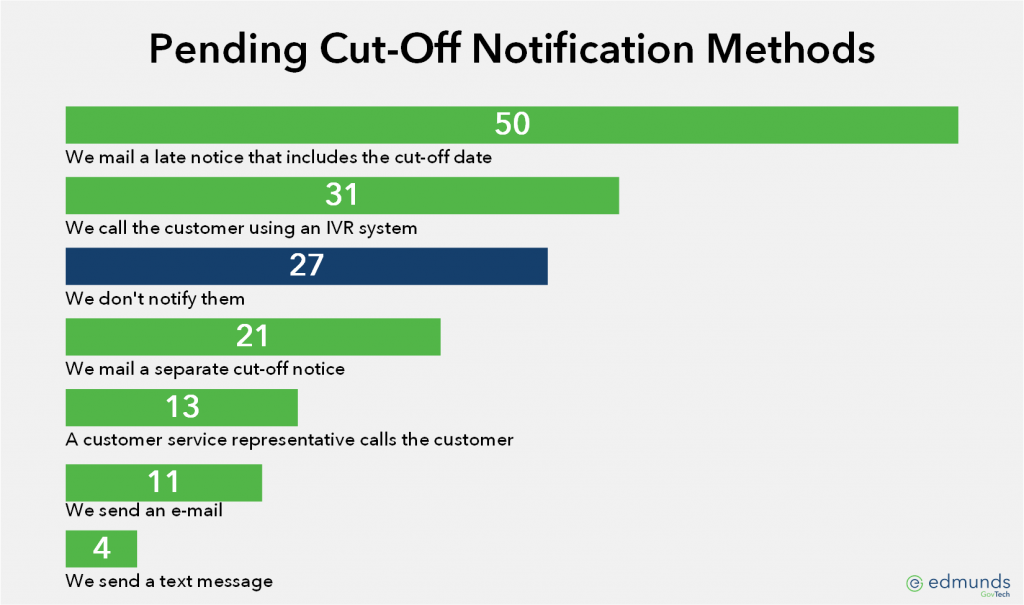
This year’s survey also asked how utilities notify customers after they have been disconnected for non-payment. The responses are shown below (again, a few of the participating utilities employ multiple methods of contact):
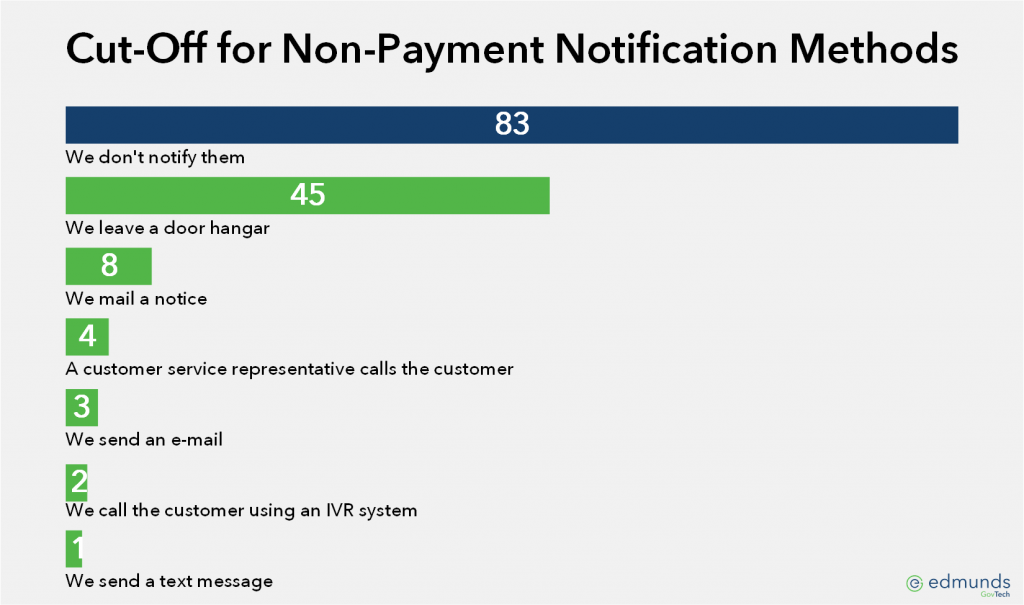
After hours reconnect fees
Of the 118 utilities that cut off for non-payment, 61 of them (representing 51.7%) will reconnect after hours and charge a fee for this service. This is down from 42.6% of responding utilities in the 2017 Utility Fee Survey. 43 of the 61 utilities (or 70.5%) will reconnect any time after regular office hours. The remaining 18 utilities will only reconnect during selected time periods as shown below:
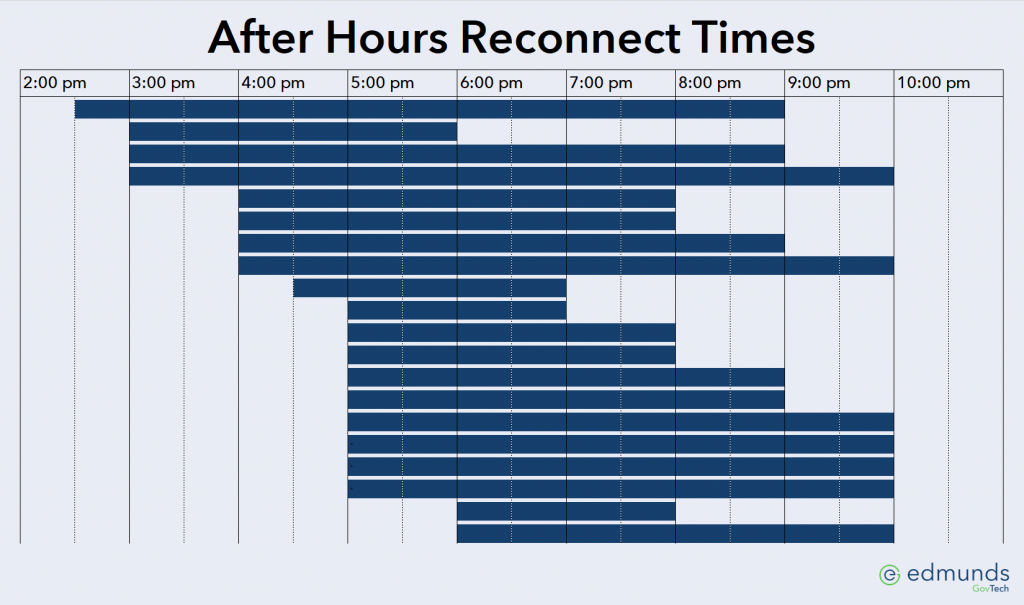
After hours reconnect fee amounts range from $15.00 to $300.00 as shown by the following graph:
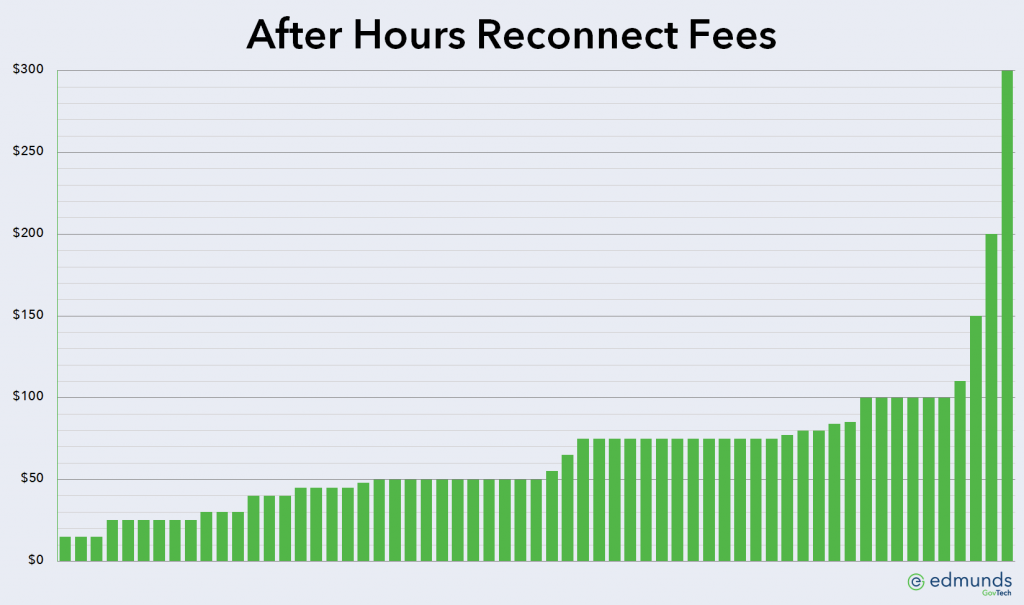
Same day reconnect fees
A new question in this year’s survey asked how many utilities charge a fee for same-day reconnection for non-payment. Five utilities charge a fee for this service, ranging from $10.00 to $35.00, as shown below:
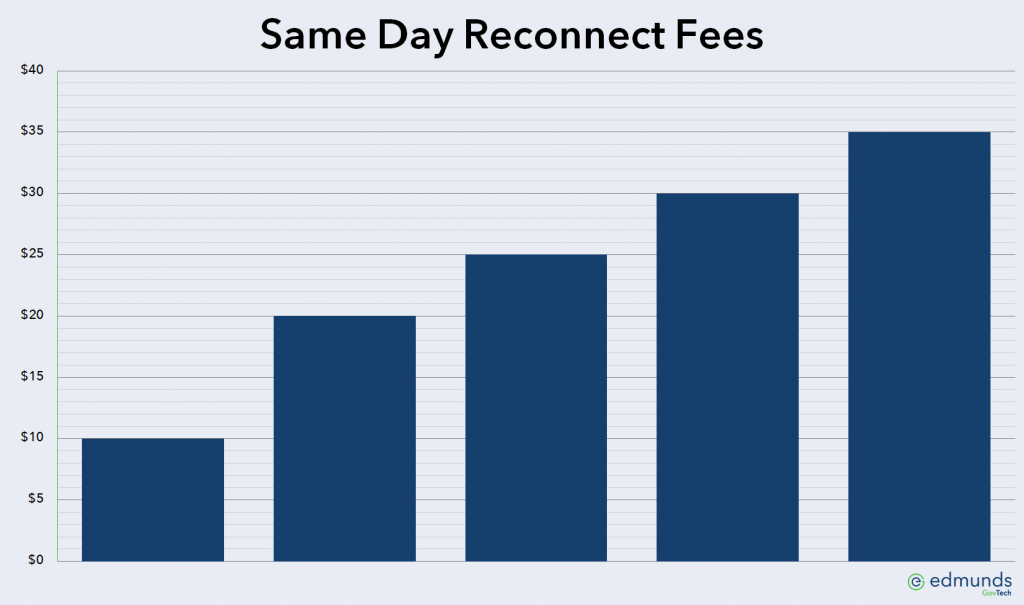
Next issue
The final survey results issue will showcase any remaining fees, including application, returned check, meter reread, meter tampering and convenience fees.
A special offer
I’m offering a special offer to the first five Utility Information Pipeline subscribers who respond. If you are one of the first five to respond, I will conduct a personalized fee consultation for one-third off the regular price. That’s $1,000 rather than the usual $1,500 price for this service!
I will review your utility’s current fee schedule and conduct an in-depth phone assessment to learn more about your fees. You will receive a presentation quality document illustrating how your fees compare with other utilities. Also included will be my recommendations for revising any existing fees and suggestions of new fees you should consider charging.


